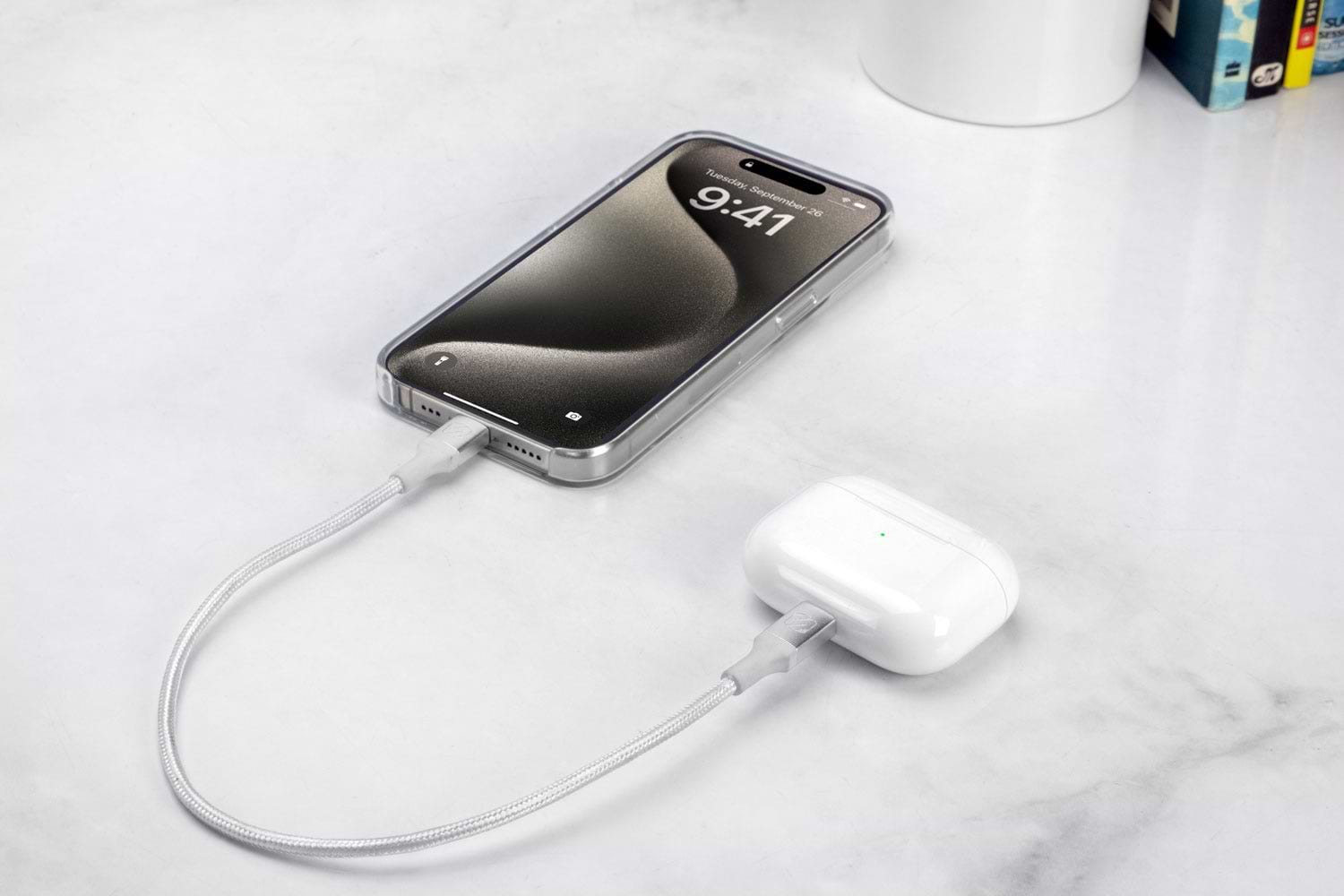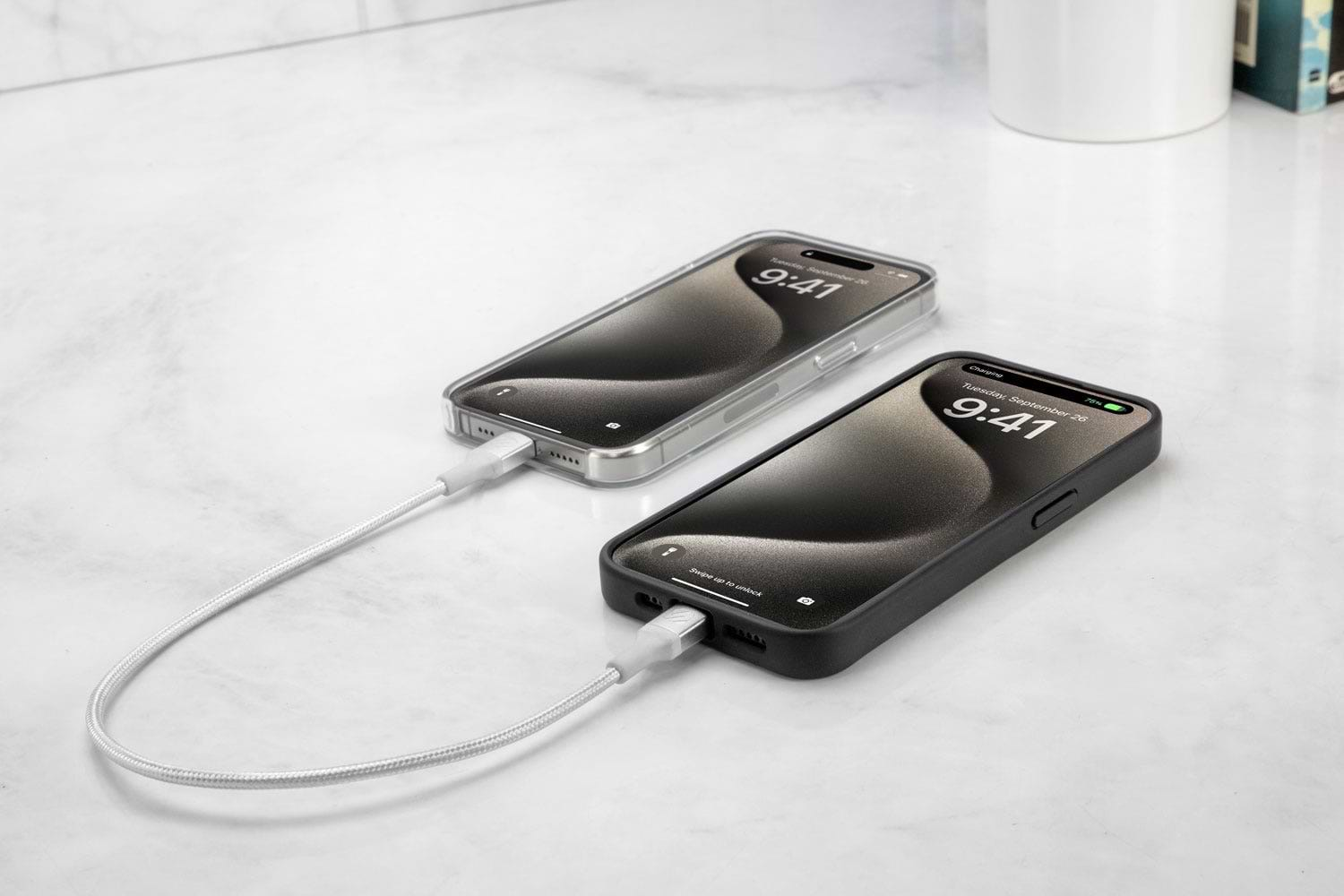Phone Charging Issues: Investigating Reverse Charging

In recent years, phone charging issues have become a common concern for smartphone users. One particular phenomenon that has gained attention is reverse charging.
This article aims to explore the concept of reverse charging, its impact on phone batteries, tips to troubleshoot and prevent issues, as well as the future of phone charging technology.
Understanding the Concept of Reverse Charging
Reverse charging refers to the ability of a smartphone to function as a power source and charge other devices. While it may sound like a convenient feature, it can also lead to various problems if not properly managed.
The Basics of Reverse Charging
When a smartphone enters the reverse charging mode, it essentially reverses the roles of the charger and the phone. Instead of drawing power from the charger to charge the phone's battery, the phone becomes the power source and supplies energy to other devices through its charging port or wireless capabilities.
Imagine you are on a camping trip, and your friend's smartwatch is running low on battery. With reverse charging, you can simply connect their smartwatch to your smartphone and give it a quick power boost. This feature can be incredibly useful in situations where you don't have access to a traditional power source.
However, it's important to note that reverse charging can drain your smartphone's battery quickly. If you're not careful, you might find yourself with a dead phone and no way to charge it. It's crucial to monitor your phone's battery level and use reverse charging sparingly to avoid any inconveniences.
How Reverse Charging Works
For reverse charging to work, the smartphone's battery needs to have enough charge. Once activated, the phone can transfer power to other devices by either using a wired connection or utilizing wireless charging protocols such as Qi. The amount of power transferred depends on the phone's capabilities and the connected device.
Let's dive a bit deeper into the technical aspects of reverse charging. When a smartphone is in reverse charging mode, it acts as a power source with a specific voltage and current output. This output is regulated by the phone's hardware and software to ensure safe and efficient power transfer.
When you connect another device to your smartphone for reverse charging, the phone detects the connected device and adjusts its power output accordingly. This intelligent power management ensures that the connected device receives the appropriate amount of power without overloading or damaging it.
It's worth mentioning that not all smartphones support reverse charging. This feature is usually found in high-end devices with larger batteries and advanced power management systems. Before attempting to use reverse charging, it's essential to check if your smartphone supports this functionality.
Reverse charging opens up a world of possibilities. You can use your smartphone to charge wireless earbuds, smartwatches, or even another smartphone. This feature is especially handy when you're traveling and need to charge multiple devices simultaneously.
However, it's important to keep in mind that reverse charging can have limitations. The power transfer rate may be slower compared to traditional charging methods, and some devices may not be compatible with reverse charging. It's always a good idea to consult the user manual or manufacturer's guidelines to ensure compatibility and optimal charging performance.
Common Phone Charging Problems
While reverse charging presents its own set of issues, it is important not to overlook the common phone charging problems that many users encounter.
When it comes to charging our phones, we expect a seamless experience that keeps our devices powered up and ready for use. However, there are times when we encounter frustrating issues that hinder the charging process. Let's take a closer look at some of the most common phone charging problems and explore possible solutions.
Slow Charging Issues
One common problem is slow charging. We've all experienced those moments when we plug in our phones and notice that the battery percentage is barely increasing. This can be caused by various factors such as using a low-quality charger or cable, a damaged charging port, or excessive background processes draining the battery while charging.
To address slow charging problems, it is crucial to ensure the use of compatible chargers and cables. Investing in high-quality charging accessories can make a significant difference in charging speed. Additionally, closing unnecessary apps and background processes while charging can help mitigate the drain on the battery, allowing for a faster charging experience.
Inconsistent Charging Speeds
Another frustrating situation is when the charging speed varies, even with the same charger and cable. One moment, the phone charges rapidly, and the next, it slows down to a crawl. This inconsistency can be incredibly frustrating, especially when we rely on our phones for various tasks throughout the day.
The fluctuation in charging speeds can be attributed to several factors. Fluctuating power supply from the outlet or power source can affect the charging speed. Additionally, compatibility issues between the charger and the phone can also contribute to inconsistent charging speeds.
To stabilize the charging speed, it is recommended to use a stable power source. Avoid using power outlets that are prone to power fluctuations. Furthermore, regularly checking for updates to the phone's charging firmware can help ensure compatibility and optimize the charging process.
Phone Not Charging at All
Perhaps the most alarming issue is when the phone does not charge at all. We panic as we desperately try to revive our lifeless devices, fearing that we may have to face a day without our trusted companion. However, there are several potential causes for this problem, and troubleshooting steps can help resolve the issue.
A faulty charger or cable can be the culprit behind a phone that refuses to charge. It is essential to try a different charger and cable to rule out any issues with the charging accessories. Additionally, a damaged charging port can also prevent the phone from charging. Cleaning the charging port carefully using compressed air or a soft brush can help remove any debris or dust that may be obstructing the connection.
In some cases, a drained battery may require a forced restart to kickstart the charging process. Performing a hard reset by holding down the power button and volume down button simultaneously for a few seconds can help revive the phone and allow it to charge again.
Remember, when encountering any phone charging problems, it is crucial to remain calm and follow the necessary troubleshooting steps. If the issue persists, seeking professional assistance from a certified technician may be the best course of action.
The Impact of Reverse Charging on Phone Batteries
While having the ability to charge other devices may seem convenient, it is important to understand the potential impact on phone batteries.
Reverse charging, also known as reverse wireless charging or wireless power sharing, is a feature that allows a smartphone to act as a power source for other devices. This means that you can use your phone to charge other compatible devices, such as wireless earbuds, smartwatches, or even another smartphone.
However, it is essential to consider the effects of reverse charging on the lifespan and health of your phone's battery. The convenience of this feature should be balanced with the potential drawbacks it may bring.


The Effect on Battery Lifespan
Using reverse charging extensively can lead to faster battery degradation. When the phone's battery is repeatedly discharged to charge external devices, it undergoes additional cycles that contribute to overall wear and tear. Each battery cycle involves a discharge and recharge process, and the more cycles a battery goes through, the more its capacity diminishes over time.
While modern lithium-ion batteries, commonly used in smartphones, are designed to withstand a certain number of charge cycles, excessive use of reverse charging can accelerate the battery's aging process. It is important to note that battery degradation is a natural occurrence, but using reverse charging sparingly and only when necessary can help mitigate the impact on your phone's battery lifespan.
Potential Damage to the Battery
Reverse charging can also result in overheating, which poses a risk of damaging the battery or even causing a fire. When a phone is used for reverse charging, it generates additional heat due to the energy transfer process. Excessive heat can decrease the battery's capacity and accelerate its aging process.
To prevent overheating, it is crucial to monitor the temperature while using reverse charging. If you notice that your phone is getting unusually hot, it is advisable to pause or discontinue the reverse charging process. Additionally, it is important to avoid exposing the phone to direct sunlight or high-temperature environments, as this can further increase the risk of overheating and potential damage to the battery.
Furthermore, it is worth noting that not all smartphones support reverse charging, and even among those that do, the power output may vary. It is essential to consult your device's user manual or manufacturer's guidelines to ensure safe and optimal usage of reverse charging.
In conclusion, while reverse charging can be a convenient feature, it is crucial to be aware of its potential impact on phone batteries. Using reverse charging sparingly and monitoring the temperature can help mitigate the risk of battery degradation and damage. As technology continues to evolve, it is important for users to stay informed about the best practices and limitations of their devices to ensure optimal performance and longevity.
Preventing and Troubleshooting Reverse Charging Issues
Fortunately, there are steps you can take to prevent and troubleshoot reverse charging issues.
Regular Maintenance for Your Phone Charger
Performing regular maintenance on your phone charger can help ensure its optimal functionality. Check for any signs of damage or frayed cables, clean the charging port, and avoid exposing the charger to moisture or extreme temperatures.
Best Practices for Phone Charging
Adhering to best practices when it comes to phone charging is essential for prolonging battery life and reducing the risk of issues. Avoid using unauthorized chargers and cables, charge your phone in a cool and well-ventilated area, and try not to let your battery completely drain before recharging.
The Future of Phone Charging Technology
As technology continues to advance, the future of phone charging holds exciting possibilities.
Innovations in Reverse Charging
Companies are continually refining and improving reverse charging technology. Wireless charging pads with multiple device support and more efficient power transfer methods are being developed, enhancing the convenience and versatility of reverse charging.
The Role of Wireless Charging
Wireless charging, in particular, is expected to play a significant role in the future of phone charging technology. With the elimination of physical charging cables, it offers enhanced convenience and a more streamlined charging experience. Furthermore, improvements in wireless charging efficiency continue to be made, reducing charging times and optimizing power transfer.
Conclusion
In conclusion, reverse charging has provided smartphone users with a new capability, allowing them to charge other devices using their phones. However, it is important to be aware of the potential impact on phone batteries and the various issues that can arise from reverse charging. By following best practices, performing regular maintenance, and staying informed about the latest advancements in phone charging technology, users can optimize their charging experience and ensure the longevity of their devices.